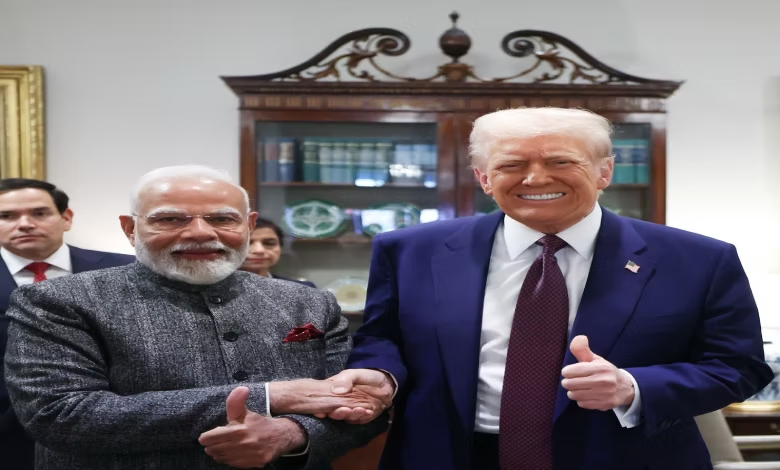
New Delhi: Asian nations, including India, are confronting a period of uncertainty as President Donald Trump prepares to implement his “reciprocal tariffs” policy across all countries, quashing rumors of a more limited initial rollout. Speaking to reporters aboard Air Force One, Trump confirmed the broad scope of the tariffs, stating, “You’d start with all countries, so let’s see what happens.” These tariffs, set to be unveiled on April 2, are part of Trump’s strategy to address global trade imbalances, revitalize American manufacturing, and generate revenue for domestic priorities like extending tax cuts.
The tariffs present a significant challenge for economies in Asia, which have historically relied on exports to the U.S. and low trade barriers. Details on the specific tariffs, their calculation, and potential exemptions remain unclear. Trump has indicated the tariffs will reflect other countries’ rates and account for non-tariff barriers, though the methodology is yet to be explained. The White House has not specified when the tariffs will take effect. “We’re going to be much nicer than they were to us, but it’s substantial money for the country,” Trump said, signaling a blend of firmness and flexibility.
According to Reuters, Trump’s plan includes import taxes that match the rates other nations impose on U.S. goods, with India, the European Union, South Korea, and Brazil among the countries mentioned as potential targets. In response, India is taking a proactive approach, distinguishing itself from nations like China and the European Union by seeking to appease the Trump administration. Reuters reported that India is open to reducing tariffs on over half of U.S. imports, valued at $23 billion, and has offered cuts on U.S. farm products such as almonds and cranberries.
Negotiations in New Delhi with U.S. trade officials, including Assistant U.S. Trade Representative Brendan Lynch, resulted in India agreeing to lower tariffs on items like bourbon whiskey and various agricultural products—almonds, walnuts, cranberries, pistachios, and lentils. The talks, which began on Wednesday and were extended from four to five days, laid the groundwork for a bilateral trade agreement (BTA). India’s commerce ministry confirmed that both sides discussed enhancing market access and reducing tariff and non-tariff barriers.
Indian officials noted several positive developments: the extension of talks by a day, plans for virtual negotiations, and India’s unique position as the only country pursuing a mutually beneficial BTA with the U.S., while others like China, Canada, Mexico, Germany, and the European Union have chosen retaliation. “President Trump’s positive reference with regard to India” was also cited as encouraging, according to an anonymous official. This referred to Trump’s White House remarks on Friday, where, as PTI reported on Saturday, he described Prime Minister Narendra Modi as a “very smart man” and “great friend,” expressing confidence in the tariff talks.
The negotiations, described by officials as occurring in a “friendly and cordial atmosphere with a shared purpose,” aim to finalize an agreement by September, aligning with the leaders’ vision to boost U.S.-India trade to $500 billion by 2030 under “Mission 500.” India has already made concessions, reducing duties on bourbon whiskey from 150% to 100% last month, with import duties on agricultural products like cranberries, almonds, and walnuts ranging from 30% to 100%, and lentils at around 10%.
In a further alignment with U.S. trade expectations, India eliminated the 6% “Google tax” on online ads, a levy that had burdened global tech firms without a physical presence in the country. The Financial Times reported this as a step to ease trade talks and potentially avoid U.S. tariffs. On February 13, Modi and Trump resolved to deepen the U.S.-India trade relationship, aiming for growth that ensures fairness, national security, and job creation—setting the stage for their ambitious $500 billion trade goal.
As Trump prepares to launch his tariff policy, India’s strategy of concessions and active engagement stands out, positioning it to potentially mitigate the impact of the upcoming trade measures.
(With inputs from agencies)




